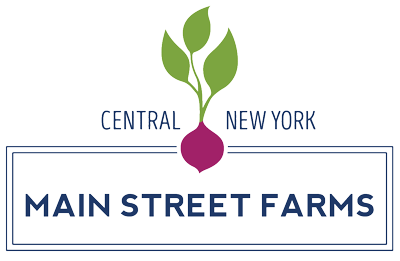This time of year is a favorite of mine for all that stunning Upstate NY has to offer. The gorgeous warm days turn to cooler nights. The bright greens of the trees and fields start to fade to gold with the slightest pop of oranges and reds. The change can be noticeably felt in the air. But with it comes some of the most amazing foods that are not only rich in nourishment but also healing for your gut. It’s squash season!
Squashes are powerhouse fruits in many regards when it comes to nutrition. One of the lines that many of us hear often is- “you are what you eat”. This is not exactly true… it should actually be- “you are what you absorb”. You see, digestion and absorption are processes that must be working well in order for our bodies to function optimally. If you are eating thoughtfully planned out meals of healthy foods but have issues with digestion, then your absorption of the nutrients is most likely sub-par. Will squashes fix your digestive issues? Not altogether, no. But they are very easy for our digestive tracts to breakdown, hopefully leading to higher chances for nutrient absorption.
Squashes are a great source of soluble fiber. Soluble fiber can be dissolved by water that creates a gel- like substance. The human gut actually doesn’t utilize fiber in any way as a nutrient, like it would a vitamin or mineral, but it does serve a purpose. Fibers feed important bacteria living in our guts (mainly our colons). These little critters have very important jobs like helping us utilize vitamins and minerals, some actually produce vitamins and minerals, and many of them help our immune system. Therefore, feeding them is important. This soluble fiber feeds the bacteria; this is also known as a prebiotic. Soluble fiber is usually less irritating to the gut than insoluble fiber for those with gut issues as well.
Squashes are colorful fruits, especially containing pigments of oranges, reds and yellows. This means they are high in beta carotene, which is a precursor to vitamin A. Beta carotene acts as an antioxidant, protecting our DNA from free- radical damage. As an important precursor to vitamin A, it helps in anti-inflammatory functions. Vitamin A plays a key role in the gut mucosal lining and how it interacts with the immune system. This mucosal lining makes decisions in types of immune cells to activate in the presence of bacteria, viruses or other invaders.
Of course squashes contain other vitamins and minerals as well: vitamin C, potassium, and magnesium to name a few. Squashes are a great source of unprocessed carbohydrates, giving you energy to make it through your long days. Due to their fiber content, they won’t raise your blood sugar as fast as other processed carbohydrates either, making them a better choice for those with insulin resistance issues.
I encourage you to try as many different varieties of squashes that you can possibly find this season. Bake them, roast them, make a soup, bake the seeds and have them for a snack… There are endless possibilities and they are easy to batch cook and freeze as well. Below is a favorite breakfast recipe of mine that keeps me satisfied until lunch!
Baked Squash Egg Rings
<2 servings>
INGREDIENTS
Winter Squash – Kabocha or acorn squash
1 ½ tbsp olive oil, separated
1 ½ tsp pressed garlic
2 tbsp capers
1/2 tsp sea salt
1/2 cup chopped tomatoes (if tomatoes are not your jam, try 1/2 cup of chopped leeks)
4 cups chopped baby spinach
½ cup fresh herbs- pick a blend of your favorites
4 eggs
DIRECTIONS
1. Preheat the oven to 400ºF.
2. Wash the squash well. Cut 4 1-inch thick rounds and peel out the seeds in the center. Try to keep them as even as possible. Using ½ tablespoon of olive oil, oil both sides of the 4 rounds of squash and bake on a parchment lined baking sheet for 20 minutes, turning the squash pieces once at 10 minutes.
3. For the tomato sauce (again, you can replace leeks with tomatoes), heat 1 tablespoon of olive oil in a sauté pan and add garlic, capers and sea salt, cooking over medium heat for 2 minutes.
4. Mix well, add tomatoes (or leeks) and cook for another 5 minutes.
5. Add spinach and basil then saute for an extra minute covering the spinach with the hot tomato sauce so it cooks and softens, then turn heat off.
6. Crack one egg into each of the 4 squash rings then evenly place the tomato spinach mixture inside around the egg.
7. Cook for another 10-12 minutes. Check at 10, and leave in until done. This will be based on how you like your egg cooked.
8. Top with more fresh herbs, sea salt, and freshly grated parmesan cheese
This post was written by our friend Amy Carlson, a nutritionist from Good Guts Wellness. If you want to know more about Amy, check out goodgutswellness.com.


